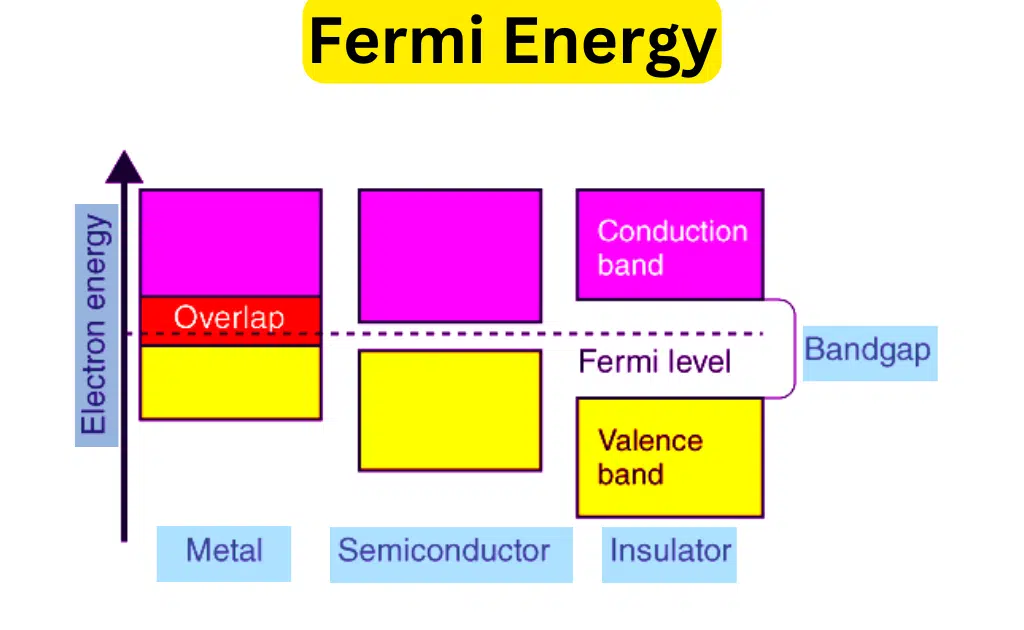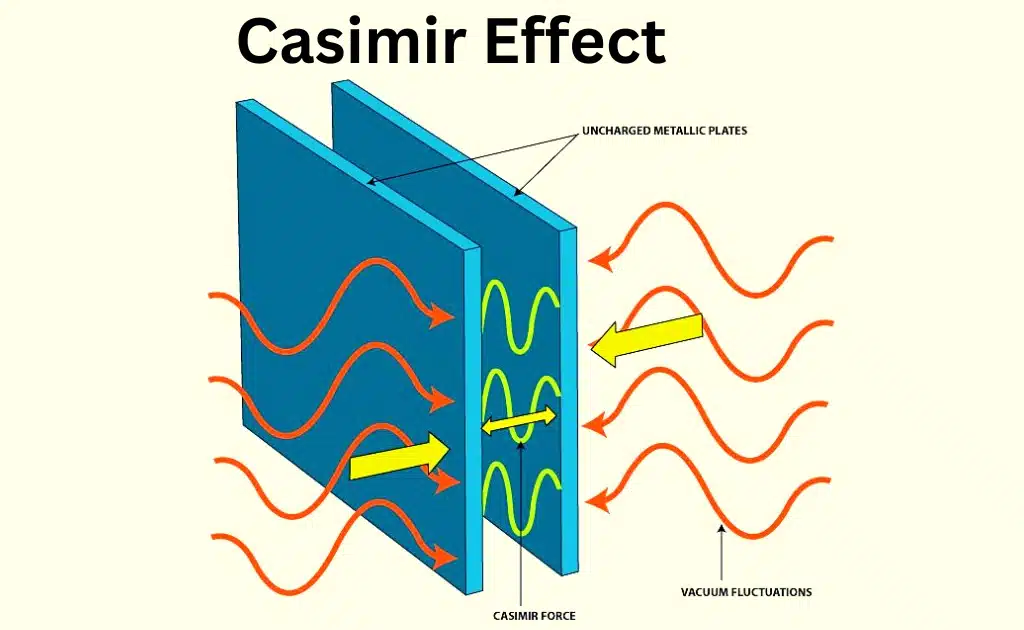Fermi Energy-Definition, Calculation, And Applications
Fermi energy refers to the energy difference between the highest and lowest occupied single-particle states in a quantum system of non-Interacting fermions.
In a metal, the lowest occupied state is usually taken to mean the bottom of the band, whereas in a Fermi gas the lowest occupied state is usually taken to mean the top of the band.
Fermi Energy
Fermi energy is a concept in quantum mechanics. It usually refers to the energy difference between the highest and lowest occupied single-particle states in a quantum system of non-interacting fermions at absolute zero temperature.
The Fermi level is named after the physicist, Enrico Fermi, and it represents the amount of energy held by the electrons in a solid.

Determining the thermal and electrical properties of solids is important in determining the thermal and electrical properties of solids.
The value of the Fermi level at absolute zero temperature is referred to as the Fermi energy. The maximum energy that an electron can achieve is 0K. The Fermi energy is always the same for each solid.
Fermi Level
At the absolute zero temperature, the highest energy level that an electron can occupy is called the Fermi Level. At absolute zero temperature, the electrons are in the lowest energy state, and that’s why the Fermi level is between the valence band and the conduction band.
The sea of fermions above which no electrons exist is referred to as the Fermi level due to the fact that there is sufficient energy. The Fermi level changes as the solid are warmed and the electrons are added to or removed from it.
Fermi Energy Level
The existence of this energy level is due to Pauli’s exclusion principle, which states that two fermions cannot occupy the same quantum state.
Each fermion has a set of magnetic quantum numbers associated with it, so if a system has more than one fermion, each fermion has a different set of magnetic quantum numbers.
The energy of the Fermi level divided by Boltzmann’s constant is known as the Fermi temperature. The temperature at which the electron’s energy is equal to the Fermi energy is also known as the temperature of the electron.
The electrons in the lower states of energy in metal are measured.
Fermi Energy Calculation
We can determine the lowest possible Fermi energy by grouping states with equal energy and arranging them in increasing order of energy. We then add particles one at a time, successively filling up the unoccupied quantum states with the lowest energy.
The energy of the highest occupied state is the Fermi energy when all the particles are arranged the same way. The electrons in the metal are still moving even though the metal has been cooling to near absolute zero temperature. The fastest ones move at a speed that is equal to the energy of the particle.
Fermi Energy Application
It is an important concept in quantum mechanics. There are some Fermi energy applications given here.
- It can be used in insulators and semiconductors.
- It describes insulators, metals, and semiconductors.
- The electrical and thermal characteristics of the solids can be determined with the help of Fermi energy.
- Understanding the stability of white dwarfs is an important part of nuclear physics. White dwarfs are stars that have a fraction of the mass of the Sun but have the same amount of radius.
Related FAQs
What is fermi energy?
Fermi energy refers to the energy difference between the highest and lowest occupied single-particle states in a quantum system of non-Interacting fermions.
What is the Fermi energy and why is it important?
A measure of the energy of the least tightly held electrons within a solid, named for the physicist who first proposed it, is called the Fermi level.It is important in determining the electrical and thermal properties of solids
Do insulators have Fermi energy?
The fermi-energy is the maximum energy which an electron can have at absolute zero (T=0). In semiconductors and insulators it’s defined as the uppermost edge of the valence band.
Thus, the maximum energy is the upper edge of the valence band.







Leave a Reply